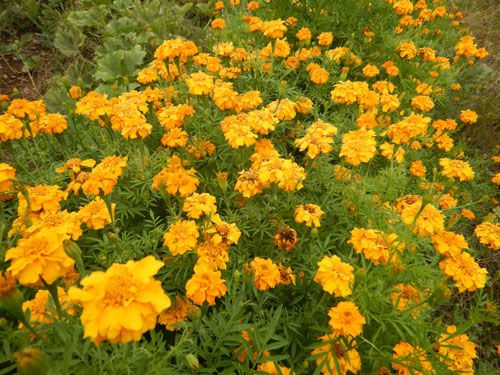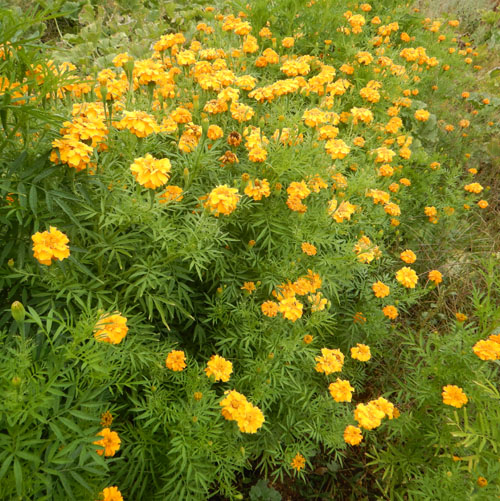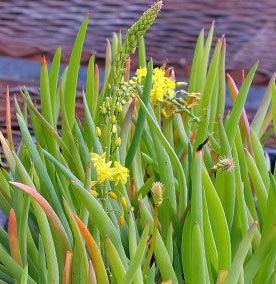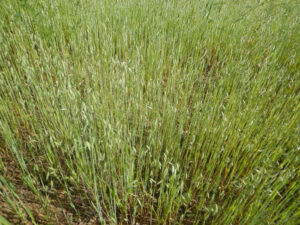Marigold, African “Tururu” (Tagetes erecta) seeds, organic
$3.95 – $31.10
Family: Aster (Asteraceae)
Annual: 90 days to flowers
Originally from South America, this is the erect, single-flowered type commonly found in East Africa. The flowers have a single row of petals, they are orange and gold, and they smell excellently. Traditional usage (TWM): antiinflammatory, antiseptic and coloring agent for salves and creams. Plant prefers full sun and regular garden soil. Sow in spring, in pots or directly in the garden. Barely cover seed with soil, tamp securely, and keep evenly moist and warm until germination, which takes only a few days. Grows fast to a 3-foot bush. Very rewarding.
Packet contains 50 seeds
5 g contains ~2,300 seeds
10 g contains ~4,600 seeds
Certified Organically Grown







Darryl Hall (verified owner) –
Last year, a lot of my garden was decimated by potato beetles. This year I mixed Tururu in my rows of potatoes and my leafy greens. The results were amazing. Not only did it keep down the bugs above ground, I’d swear it also worked as a biofumigant as my potato harvest was perfect.
Upvote if this was helpful (1) Downvote if this was not helpful (0) Watch Unwatch Flag for removal
Richo Cech –
Hi Darryl,
Thanks for this informative communication. I. too have found that interplanting with flowers, especially the marigolds which as you know secrete thiophenes that fight baddies in the soil, improves health of desirable crops and increases yield. I’m glad you did this and let us know about it. I’m glad you have. . . potatoes. richo
Upvote if this was helpful (0) Downvote if this was not helpful (0) Flag for removal